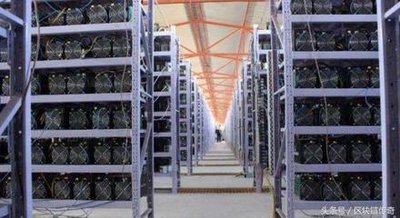The digital frontier, once a nascent concept, now hums with the relentless energy of cryptocurrency mining. Fortunes are forged and lost in the blink of an algorithm, and the engine driving this revolution is the ASIC miner. But with the landscape constantly shifting, the question isn’t just *whether* to invest, but *how* to future-proof your operations against the inevitable tides of technological advancement and market volatility. Investing in high-performance ASIC mining equipment isn’t simply a transaction; it’s a strategic imperative for longevity and profitability.
Bitcoin, the undisputed king of cryptocurrencies, remains the primary target for many mining operations. Its established infrastructure and enduring value proposition make it a compelling, though increasingly competitive, arena. The halving events, programmed scarcity, and ever-fluctuating difficulty adjustments all demand miners stay ahead of the curve. High-performance ASICs specifically designed for the SHA-256 algorithm, the backbone of Bitcoin mining, are critical to maintaining a competitive edge. Consider the trade-offs: initial investment versus long-term efficiency, power consumption versus hash rate. A seemingly cheaper option today could become an expensive liability tomorrow, choked by rising electricity costs and dwindling returns.

Beyond Bitcoin, a universe of alternative cryptocurrencies, or altcoins, beckons. Ethereum, with its transition to Proof-of-Stake (PoS), has altered the mining landscape, pushing many miners to explore Ethereum Classic (ETC) or other GPU-mineable coins. The choice hinges on a careful evaluation of potential profitability, factoring in network difficulty, block rewards, and the ever-present specter of coin price fluctuations. While ASICs dominate Bitcoin mining, GPU rigs offer more flexibility for mining a wider range of algorithms and currencies, albeit often with lower efficiency for specific tasks. Diversification, while potentially mitigating risk, also introduces complexity in management and optimization.
DOGE, initially conceived as a lighthearted meme coin, has defied expectations and carved out a significant niche in the cryptocurrency ecosystem. Its proof-of-work mechanism, Scrypt, makes it mineable, albeit often with lower profitability compared to SHA-256 coins. Dedicated Scrypt ASICs exist, but their demand and availability can be more volatile than Bitcoin mining hardware. The value proposition of mining DOGE often rests on community sentiment and speculative surges, making it a more precarious investment compared to more established cryptocurrencies.
The physical infrastructure supporting mining operations is just as vital as the hardware itself. Mining farms, often located in regions with cheap electricity and favorable climates, represent significant capital investments. The optimal location considers not only power costs but also cooling efficiency, internet connectivity, and regulatory stability. High-density mining operations generate substantial heat, necessitating advanced cooling solutions like immersion cooling or sophisticated ventilation systems. Efficient power distribution and redundancy are crucial to minimize downtime and maximize uptime, the lifeblood of any profitable mining venture.

The role of exchanges in the mining ecosystem cannot be overstated. They serve as the crucial conduit for converting mined cryptocurrencies into fiat currencies or other digital assets. The choice of exchange impacts profitability, as fees and liquidity can vary significantly. Miners must carefully consider the exchange’s reputation, security measures, and trading volume before entrusting it with their hard-earned rewards. Furthermore, understanding tax implications related to cryptocurrency mining and exchange activities is paramount for legal compliance and sound financial management.
Investing in high-performance ASIC mining equipment is not a static decision but an ongoing process of assessment and adaptation. Monitoring the market trends, tracking technological advancements, and staying informed about regulatory changes are all essential components of future-proofing your operations. The ability to pivot, diversify, and optimize is what separates thriving mining ventures from those left behind in the dust. The future of cryptocurrency mining is uncertain, but one thing remains clear: adaptability and strategic foresight are the keys to unlocking long-term success.
This article explores the strategic advantages of investing in cutting-edge ASIC mining hardware to enhance operational efficiency, reduce energy costs, and stay competitive amid evolving blockchain challenges, offering insightful perspectives on future-proofing cryptocurrency ventures through technology innovation.